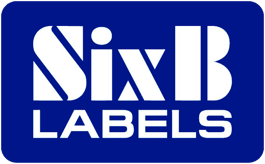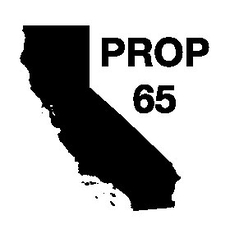In the world of print production, producers and consumers are now operating in a regulatory environment that is much more challenging for manufacturers than in years past. Knowing that, you can be confident that working with SixB Labels on your label projects is a great idea! Our knowledgeable approach will help you to stay in compliance with the rules governing the use of hazardous substances in materials and the production environment. We know that no one wants to worry about fines, product recalls, or other negative outcomes.
What Makes SixB Labels An Eco-Friendly Manufacturer?
We have written before about some of the ways that SixB Labels strives to be a sound, ecologically mindful producer of labels, bar codes and labeling products. We will always do our best to be responsible environmental stewards, knowing that we can care for our community while we grow our business and advance our industry. This includes compliance with the rules which govern how we manufacture our products.
What EU Restrictions on Substances Does SixB Labels Follow?
SixB Labels, like many other manufacturers, produces for a global market. Thus, we strive to be in compliance with regulations crafted both in the United States and abroad, including those created by the European Commission.
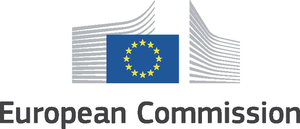
One such is the body of regulations known as REACH (Registration, Evaluation, Authorization, and Restriction of Chemicals.)
How Do We Work Within the REACH Rules?
REACH aims to improve the protection of human health and the environment through the control of chemical substances. This program shifts responsibility for safety assessments from government to industry while it encourages manufacturers to choose less-toxic chemicals in various chemical applications.
Per Farzin Bakhshian, the company's General Manager, "SixB Labels certifies that our printed and converted label products comply with the requirements set forth by the European Union EU 1907/2006 REACH."
As Farzin adds, " ... the above stated SixB Labels products are defined as articles under REACH, as mandated by the European Union (EU) and the European Economic Area (EEA), and do not contain any of the REACH substances of Very High Concern (SVHC), a list of 223 substances updated in July 2021."
How Does SixB Labels Work Within the RoHS Rules?
In addition to the requirements of REACH, SixB Labels also complies with other sets of EU regulations. One of these is the Restriction of the Use of certain Hazardous Substances in Electrical and Electronic Equipment (RoHS.) This program requires product-level compliance, and applies to manufacturers, authorized representatives, importers and distributors of a variety of products.
The RoHS Directive aims to restrict the use of certain hazardous substances that can be substituted with safer alternatives. All products made with electrical and/or electronic components, unless specifically excluded, must comply with these restrictions. The Directive currently restricts ten hazardous substances:
- Lead
- Cadmium
- Mercury
- Hexavalent Chromium
- Polybrominated Biphenyls (PBB)
- Polybrominated Diphenyl Ethers (PBDE)
- Bis(2-Ethylhexyl) Phthalate (DEHP)
- Butyl Benzyl Phthalate (BBP)
- Dibutyl Phthalate (DBP)
- Diisobutyl Phthalate (DIBP)
An example of how our company has put this dynamic into play is in our choice of ink technology. This includes the use of water-based inks, with their higher levels of water and fewer Volatile Organic Compounds, making them a greener solution to produce a more environmentally friendly product.
How Does SixB Labels Work Within the RoHS3 Directive?
Another, more recent set of EU rules we follow is the RoHS3 Directive (EU 2015/863.) Begun in 2019 (with a special provision for medical devices until 2021,) this directive expands the list of substances prohibited from use in consumer product manufacturing from six to ten, by adding four new types of phthalates (see the list above.) These restrictions govern the manufacture of such consumer products as large and small household appliances, IT devices, telecommunications equipment, toys, medical devices, and much more.
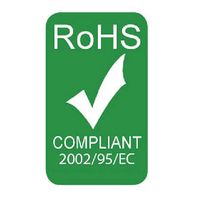
While regulation is applied at the homogeneous material level, according to the Directive, compliance is the responsibility of the company that puts the product on the market. That means that the company selling product components, (e.g., paints, pigments, solders, and glass,) is tasked with ensuring that these components contain no restricted substances, such as lead or cadmium.
In accordance with these directives, at SixB Labels we also certify that substances listed in EU 2015/863 (RoHS 3) are not contained in our products unless at untraceable levels. According to Farzin, "SixB Labels certifies that the aforementioned SixB Labels Products are free from Transmissible Spongiform Encephalopathy (TSE), Bovine Spongiform Encephalopathy (BSE), Wheat, Soybean, Celery, Crustaceans, Egg, Fish, Mollusk, Dairy Products, Peanut, Seeds (Cotton, Poppy, Sesame, Sunflower); Mustard, Nuts, Natural Rubber Latex, Sulfites and substances listed in the Annex II Regulation (EU) 1169/2011."
What Other Restrictions on Substances Does SixB Labels Follow?
Of course, not every regulation we follow has been designed overseas. We comply with homegrown restrictions on hazardous chemicals as well. One typical such regulation is California's Proposition 65.
How Does SixB Labels Help to Reduce Chemical Contamination in Production?
Under California's Proposition 65, any product containing levels from a list of certain chemicals requires a Proposition 65 warning label. We not only produce such labels; we ourselves, in our production, comply with the restrictions of Proposition 65.
Farzin goes on to say that "The aforementioned SixB Labels Products do not contain levels from California's list of Proposition 65 chemicals requiring a warning which includes Asbestos, BPA and Phthalates such as, but not limited to, DBP, DEHP, BBP, DINP, DIDP and DNHP. "
How Does SixB Labels Help to Reduce Toxins in Packaging?
Developed in 1989, the Model Toxins in Packaging Legislation (formerly known as CONEG Legislation) has the goal of reducing the amount of four heavy metals (lead, mercury, cadmium and hexavalent chromium) in packaging and packaging components sold or distributed throughout the United States. As Farzin puts it, "SixB Labels certify that our Label Products comply with the requirements and guidelines as stated by the Model Toxins in Packaging Legislation (formerly known as CONEG Legislation)."
SixB Labels has also opted for an eco-friendly paper selection. All of the white paper products used in our printing at SixB Labels are of FSC-certified paper, which is produced in a manner that helps maintain the environment.
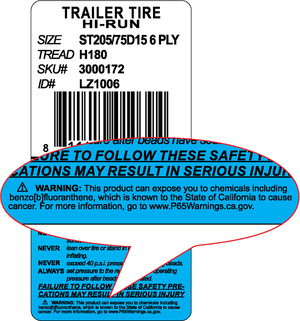 What Does SixB Labels Do to Support Ethical Sourcing?
What Does SixB Labels Do to Support Ethical Sourcing?
In addition, in compliance with EU regulations, SixB Labels does not source or add any conflict minerals (Tin, Tungsten, Tantalum and Gold.) These substances sometimes finance armed conflict or are mined with forced labor.
What Does SixB Labels Certify Regarding Its Raw Materials?
SixB Labels Corporation also certifies, based on information by our raw material suppliers, that the film and adhesives used in the production of our products meet the requirements of FDA 21CFR 175.105 as well as 21CFR 177.1520.
Subsection 175.105 governs chemicals used in adhesives, and 21CFR 1520 regulates olefin polymers as Substances for Use as Basic Components of Single and Repeated Use Food Contact Surfaces. SixB Labels also makes adhesive selections that are recycling-compatible, all of which help to safeguard the environment.
"SixB Labels makes the preceding statement based on information from our suppliers," Farzin adds. "Our company does not intentionally add these substances to our products and they are not known or expected to be present; therefore, their content is not analyzed by SixB Labels Corporation."
Our Door is Always Open
The world of regulatory compliance, particularly when it comes to hazardous chemical regulations and the need for warning labels, can be daunting. Please feel free to come to us with your label questions. From regulatory compliance in our label production, to materials, quantities, and technology, we stand ready to answer your questions and meet your labeling needs. If you are considering a label project, contact us today!
Save Time - Email Us Directly With Your Questions on How We Can Help Your Label Project.
See Related:
